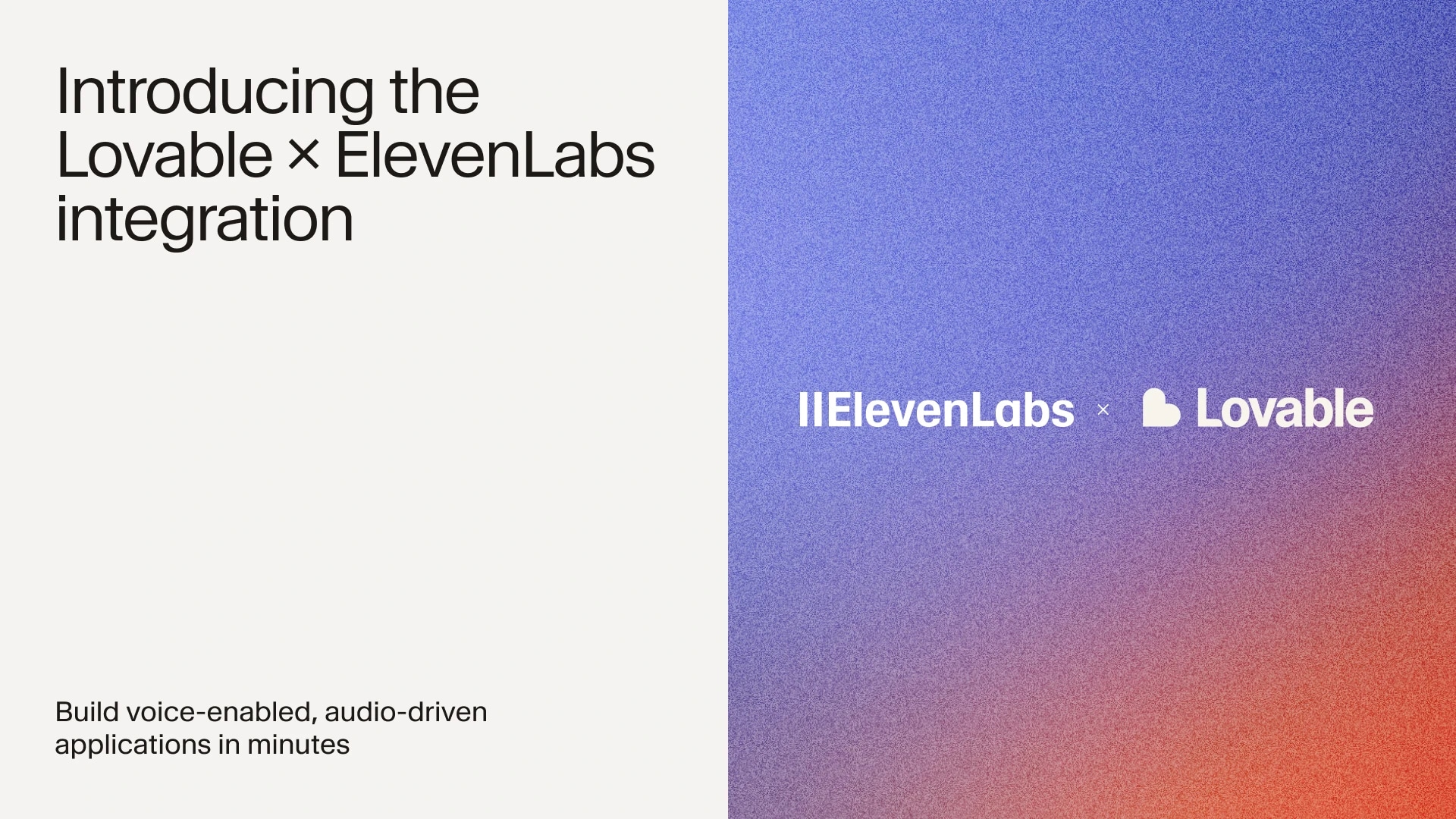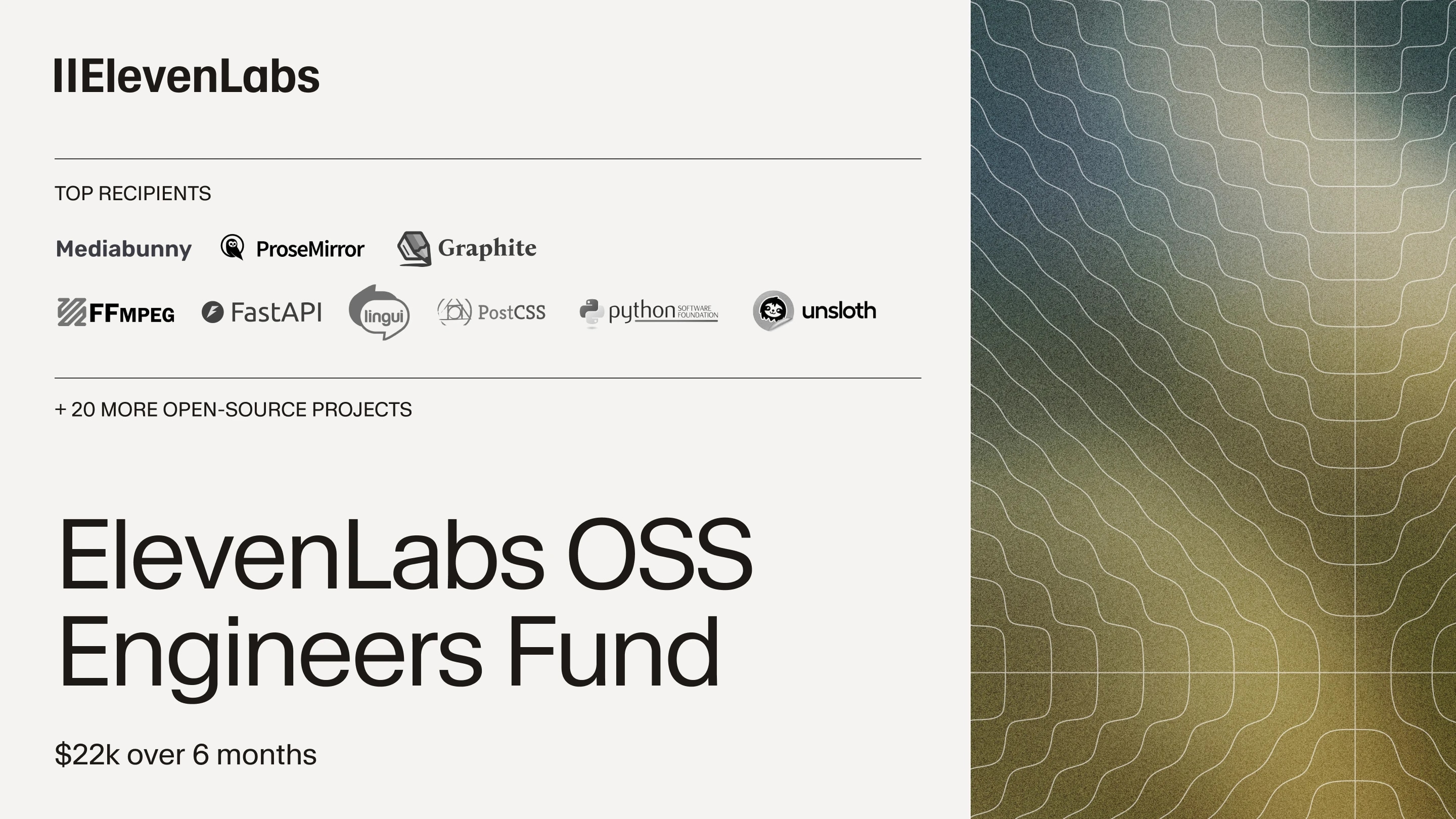
Czym jest Tortoise-tts-v2?
Dowiedz się, czym jest Tortoise-tts-v2, jak działa i jak wypada w porównaniu z ElevenLabs.
Text to Speech technologia zrobiła ogromne postępy w ostatnich latach. Narzędzia takie jak ElevenLabs są na czele innowacji TTS, tworząc naturalnie brzmiące głosy AI w
Jednak, podczas gdy płatne narzędzia takie jak ElevenLabs zdobywają uznanie, pojawiły się także imponujące rozwiązania open source. Tortoise-tts-v2 jest jednym z takich przykładów.
Ten artykuł wyjaśnia, czym jest Tortoise-tts-v2, jak działa, do czego można go używać i jak wypada w porównaniu z ElevenLabs. Przeanalizujemy funkcjonalności, kluczowe cechy i potencjalne zastosowania każdego z narzędzi. Naszym celem jest dostarczenie jasnych informacji o działaniu każdego systemu i wskazanie, który z nich jest lepszym wyborem dla różnych potrzeb TTS.
Tortoise-tts-v2: Przegląd
Stworzony przez Jamesa Betkera, Tortoise-tts-v2 to open source zamiana tekstu na mowę program, znany z solidnych możliwości wielogłosowych oraz realistycznej prozodii i intonacji.
To godny uwagi przykład technologii TTS open source, oferujący szereg nowych funkcji, w tym produkcję losowych głosów, użycie dostarczonych przez użytkownika latentów kondycjonujących oraz możliwość korzystania z wstępnie wytrenowanych modeli.
Co wyróżnia Tortoise-tts-v2 spośród innych narzędzi open source, to podejście do generowania głosu. Wykorzystuje zarówno dekoder autoregresyjny, jak i dekoder dyfuzyjny, znane z szczegółowego, choć wolniejszego, outputu. Oznacza to, że oferuje wysoką jakość, ale z niższą prędkością, generując średniej wielkości zdania co kilka minut na GPU K80.
Unikalna nazwa Tortoise-tts-v2 odzwierciedla jego naturę: dostarcza wysokiej jakości outputy głosowe, ale robi to w przemyślanym tempie, przypominającym żółwia.
API Tortoise-tts-v2 pozwala na programowe użycie, zaspokajając bardziej zaawansowane potrzeby i personalizację w generowaniu głosu. Ta wszechstronność, w połączeniu z unikalnym podejściem do syntezy głosu, czyni Tortoise-tts-v2 godnym uwagi narzędziem w krajobrazie text-to-speech.
Chcesz dowiedzieć się więcej o tym, jak używać Tortoise-tts-v2? Sprawdź jego przewodnik użytkowania.
Jak działa Tortoise-tts-v2
Tortoise-tts-v2 to nowoczesny program open source text-to-speech, ale jak dokładnie działa? W jego rdzeniu znajdują się dwie główne technologie: dekoder autoregresyjny i dekoder dyfuzyjny. Mogą brzmieć skomplikowanie, ale rozłóżmy je na części.
Dekoder Autoregresyjny
Dekoder autoregresyjny to model używany w różnych aplikacjach, w tym w systemach text-to-speech (TTS) jak Tortoise-tts-v2. Aby go zrozumieć, rozłóżmy termin:
Auto: Ta część słowa sugeruje coś, co odnosi się do samego siebie.
Regresyjny: Odnosi się do procesu przewidywania wartości na podstawie poprzednich wartości.
Dekoder autoregresyjny działa, przewidując kolejną część swojego outputu (jak następny dźwięk w sekwencji mowy) na podstawie tego, co już wygenerował.
Wyobraź sobie, że piszesz zdanie. Zaczynasz od pierwszego słowa, a potem, na jego podstawie, decydujesz, jakie powinno być następne. Następnie wybierasz trzecie słowo na podstawie pierwszych dwóch, i tak dalej. Dekoder autoregresyjny działa podobnie. W kontekście mowy generuje następny dźwięk na podstawie sekwencji dźwięków, które już wyprodukował.
Kluczową cechą modelu autoregresyjnego jest jego zależność od własnych poprzednich outputów do przewidywania przyszłych. Ta sekwencyjna zależność pozwala modelowi tworzyć outputy (jak mowa), które mają naturalny przepływ i są spójne.
W systemach TTS ta metoda jest szczególnie przydatna do generowania mowy, która brzmi bardziej naturalnie i ludzko. Dekoder autoregresyjny może uwzględniać rytm, ton i niuanse języka, czyniąc syntetyczny głos bardziej realistycznym. Jednak to szczegółowe przetwarzanie może spowolnić system, ponieważ musi dokładnie rozważyć każdą część mowy na podstawie tego, co już wygenerował.
Dekoder Dyfuzyjny
Dekoder dyfuzyjny to technologia używana w zaawansowanych systemach text-to-speech (TTS), takich jak Tortoise-tts-v2. Aby zrozumieć, co robi dekoder dyfuzyjny, rozłóżmy to na prostsze terminy.
Wyobraź sobie, że tworzysz rysunek. Zaczynasz od szkicu i stopniowo dodajesz warstwy szczegółów, aż obraz staje się wyraźny i szczegółowy. Dekoder dyfuzyjny działa podobnie w dziedzinie generowania mowy. Zaczyna od podstawowej struktury mowy, a następnie dodaje warstwy złożoności, aby mowa brzmiała bardziej naturalnie i ludzko.
W bardziej technicznych terminach, dekoder dyfuzyjny jest częścią sieci neuronowej, rodzaju sztucznej inteligencji, która naśladuje sposób myślenia i uczenia się ludzi. Ten dekoder dodaje drobne szczegóły do mowy, dostosowując takie aspekty jak intonacja, emocje i rytm. 'Dyfuzuje' te elementy do podstawowej struktury mowy, poprawiając ogólną jakość i sprawiając, że głos generowany przez AI brzmi bardziej realistycznie.
Proces nazywa się 'dyfuzją', ponieważ polega na rozprzestrzenianiu tych elementów mowy w całym generowanym głosie, podobnie jak dyfuzja tuszu w wodzie tworzy szczegółowy, kolorowy wzór. To podejście jest znane z produkcji wysokiej jakości outputów mowy, ale może być wolniejsze w porównaniu z innymi metodami ze względu na poziom szczegółowości i złożoności.
Dzięki tym dwóm technologiom (dekoder autoregresyjny i dekoder dyfuzyjny), Tortoise-tts-v2 jest jak wykwalifikowany artysta. Nie tylko maluje według numerów, ale dodaje głębię, emocje i realizm do obrazu — w tym przypadku do słowa mówionego.
Kluczowe Cechy Tortoise-tts-v2
Tortoise-tts-v2 wyróżnia się, ponieważ nie tylko mechanicznie zamienia tekst na mowę. Skupia się na tworzeniu outputu głosowego, który uchwyci niuanse ludzkiej mowy — wzloty i upadki tonu, pauzy i emocje. To czyni go znacząco innym od wcześniejszych systemów TTS, które często produkowały głosy robotyczne i monotonne.
Oto niektóre z jego wyróżniających się możliwości:
Możliwości Wielogłosowe
W przeciwieństwie do wielu systemów TTS, które oferują ograniczoną gamę głosów, Tortoise-tts-v2 wyróżnia się generowaniem szerokiej gamy głosów. Obejmuje to wszystko, od całkowicie fikcyjnych głosów po te, które naśladują specyficzne cechy mowy.
Realistyczna Prozodia i Intonacja
Prozodia odnosi się do rytmu, akcentu i intonacji mowy. Tortoise-tts-v2 produkuje mowę z realistyczną prozodią, co oznacza, że potrafi odtworzyć naturalny przepływ i emocje ludzkiej mowy, z czym wiele systemów TTS ma problem.
Personalizacja Głosu
Użytkownicy mogą dostarczać klipy referencyjne (nagrania mówcy), a Tortoise-tts-v2 wygeneruje mowę, która uchwyci istotę tonu, wysokości i stylu tego mówcy.
Aspekty Wydajności
Tortoise-tts-v2 jest znany z szczegółowego outputu głosowego, choć działa wolniej niż niektóre systemy TTS. To wolne przetwarzanie jest kompromisem dla wysokiej jakości i realizmu mowy, którą produkuje.
W porównaniu do innych systemów TTS, Tortoise-tts-v2 wyróżnia się zdolnością do tworzenia różnorodnych i zniuansowanych głosów. Wiele programów TTS oferuje standardowe, robotyczne głosy z ograniczoną różnorodnością. Tortoise-tts-v2 łamie ten schemat, oferując bogatsze, bardziej zróżnicowane doświadczenie dźwiękowe.
Oto kilka przykładów działania Tortoise-tts-v2.
Zastosowania i Przypadki Użycia
Zaawansowane funkcje Tortoise-tts-v2 otwierają świat możliwości w różnych branżach. Oto jak można go używać.
Audiobooki i Podcasty
Dzięki naturalnie brzmiącym głosom, Tortoise-tts-v2 jest idealny do tworzenia audiobooków i podcastów. Jego zdolność do naśladowania ludzkich emocji i wzorców mowy sprawia, że doświadczenie słuchania jest bardziej angażujące.
Narzędzia Edukacyjne
W edukacji, Tortoise-tts-v2 może być używany do tworzenia interaktywnych materiałów edukacyjnych. Jego wyraźna i ekspresyjna mowa może wspierać naukę języków lub ożywiać cyfrowe podręczniki.
Usługi Dostępności
Tortoise-tts-v2 może zwiększyć dostępność dla osób z wadami wzroku lub trudnościami w czytaniu, oferując bardziej ludzko brzmiące doświadczenie słuchania, które sprawia, że treści cyfrowe są bardziej dostępne.
Nałożone Głosy w Wideo i Animacjach
Dla producentów wideo i animatorów, program może dostarczać różnorodne nałożone głosy, dodając głębi i charakteru do treści cyfrowych.
Boty Obsługi Klienta
W obsłudze klienta, Tortoise-tts-v2 może zasilać chatboty, sprawiając, że automatyczne interakcje są bardziej osobiste i mniej robotyczne.
W każdym z tych scenariuszy, zdolność Tortoise-tts-v2 do produkcji zróżnicowanych i realistycznych wzorców mowy poprawia doświadczenie użytkownika, czyniąc treści cyfrowe bardziej przystępnymi i angażującymi.
Tortoise-tts-v2 vs ElevenLabs
Porównując Tortoise-tts-v2 i ElevenLabs, ważne jest zrozumienie, jak każdy z nich wyróżnia się w świecie technologii text-to-speech. Choć oba mają swoje zalety, ElevenLabs oferuje kilka przewag, które czynią go bardziej atrakcyjnym wyborem w różnych scenariuszach.
Szybkość i Wydajność
- Tortoise-tts-v2: Choć znany z szczegółowego outputu, działa w wolniejszym tempie. Oznacza to, że generowanie mowy zajmuje więcej czasu, co może być wadą, gdy potrzebne są szybkie rezultaty.
- ElevenLabs: Wyróżnia się szybką i wydajną generacją mowy. To czyni go odpowiednim dla projektów z napiętymi terminami lub tam, gdzie szybka produkcja treści jest kluczowa.
Zakres Głosów i Języków
- Tortoise-tts-v2: Oferuje różnorodność głosów i wyróżnia się możliwościami wielogłosowymi. Jednak jego zakres jest nieco ograniczony w porównaniu do bardziej zaawansowanych systemów.
- ElevenLabs: Posiada szerszy wybór głosów i obsługuje szerszą gamę języków. Ta różnorodność czyni ElevenLabs bardziej wszechstronnym, zwłaszcza dla projektów globalnych wymagających wielojęzycznych możliwości.
Przyjazny Interfejs
- Tortoise-tts-v2: Choć potężny, może wymagać większej wiedzy technicznej do obsługi, zwłaszcza dla osób nieznających się na programowaniu lub zaawansowanych systemach TTS.
- ElevenLabs: Zaprojektowany z myślą o przyjazności dla użytkownika. Oferuje intuicyjny interfejs, który upraszcza proces generowania mowy, czyniąc go dostępnym nawet dla osób z ograniczonymi umiejętnościami technicznymi.
Jakość Outputu
- Tortoise-tts-v2: Produkuje wysokiej jakości mowę, ale output może czasem brakować polotu i wyrafinowania, które można znaleźć w bardziej zaawansowanych systemach.
- ElevenLabs: Znany z doskonałej jakości mowy. Nie tylko generuje naturalnie brzmiące głosy, ale także zapewnia, że output mowy jest wyraźny, dobrze modulowany i blisko naśladuje ludzką intonację.
Aplikacje w Czasie Rzeczywistym
- Tortoise-tts-v2: Bardziej odpowiedni do projektów offline ze względu na wolniejsze tempo przetwarzania.
- ElevenLabs: Idealny do aplikacji w czasie rzeczywistym, takich jak chatboty obsługi klienta czy tłumaczenia na żywo, dzięki szybkim możliwościom przetwarzania.
Podsumowując, choć Tortoise-tts-v2 jest godną uwagi opcją w dziedzinie text-to-speech, ElevenLabs wyróżnia się jako bardziej solidny, wydajny i przyjazny dla użytkownika wybór. Jego zdolność do szybkiego dostarczania wysokiej jakości, naturalnie brzmiącej mowy w wielu językach czyni go lepszą opcją dla szerokiego zakresu zastosowań, od narzędzi edukacyjnych po globalną komunikację biznesową.
Ostateczne Przemyślenia
Tortoise-tts-v2 to świetny przykład technologii TTS open source, produkujący naprawdę naturalnie brzmiące głosy.
Jednak, choć Tortoise-tts-v2 oferuje unikalne funkcje, narzędzia takie jak ElevenLabs są bardziej wszechstronnym i wydajnym wyborem, zwłaszcza dla aplikacji w czasie rzeczywistym i projektów globalnych. Przyjazny interfejs ElevenLabs, szeroki zakres języków i wysokiej jakości output czynią go znacznie lepszą opcją dla poważnych twórców treści.
Zainteresowany doświadczeniem technologii TTS ElevenLabs na własnej skórze? Zacznij tutaj.

Przeglądaj artykuły zespołu ElevenLabs

Introducing the ElevenLabs × Lovable integration
Developers can now use ElevenLabs Text to Speech, Speech to Text, Agents, Music and SFX natively in Lovable. Build real-time, audio-driven applications in minutes.


